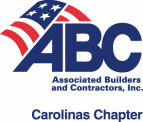There is no milestone more significant to a commercial construction project than substantial completion. For an owner, it’s the long-awaited moment it can make beneficial use of its investment. For prime contractors, it’s the moment the owner’s rights to terminate and/or assess liquidated damages is cut off. For subcontractors, it’s the moment contractual warranties typically begin to run. The list goes on and on.
 In light of how many legal rights and defenses are tied to the moment of substantial completion, you would think that contracting parties would take extra care to (1) define what constitutes “substantial completion” and (2) ensure that “substantial completion” is achieved in accordance with that carefully crafted contractual definition.
In light of how many legal rights and defenses are tied to the moment of substantial completion, you would think that contracting parties would take extra care to (1) define what constitutes “substantial completion” and (2) ensure that “substantial completion” is achieved in accordance with that carefully crafted contractual definition.
That’s not always the case, as a 2013 decision from the U.S. Court of Appeals for the Fourth Circuit (which includes North Carolina) reveals.
In 2300 Pennsylvania Avenue, LLC v. Harkins Builders, Inc., the prime contract required the general contractor to achieve substantial completion of a Washington, D.C. building project by April 25, 2010. Per the contract, the architect’s “Certificate of Substantial Completion” established the date of substantial completion, and the GC would be liable for liquidated damages if the architect’s certificate recited a date later than April 25, 2010.
A Certificate of Occupancy was issued on February 25, 2010 (i.e., two months before the contract completion date), and tenants began moving into portions of the building two days later. The GC, however, didn’t request the Certificate of Substantial Completion until July 13, 2010, and the architect didn’t issue the certificate until September 23, 2010. When issued, the certificate recited an August 2, 2010 completion date, to which the GC objected. The owner, however, maintained the date was appropriate, since certain windows required repair work between February 25 and August 2, 2010.
The trial court granted summary judgment to the owner, awarding it $637,200 in liquidated damages from April 25 to August 2, 2010 (i.e., $6,372 per day for 100 days). The Fourth Circuit affirmed the lower court’s order, finding that correction of the window issues was a prerequisite to the architect’s issuance of its Certificate of Substantial Completion under the terms of the contract. The Court disregarded the GC’s argument that the owner had full occupancy, dominion and control over the project and was utilizing it for its intended purpose well before April 25, 2010, ruling that the GC was reading “the requirement of the architect’s certification out of the definition of substantial completion” and thus failing to give “effective meaning to all of [the contract’s] terms.”
Harsh result? No doubt. After all, at the time of contracting, liquidated damages are intended to represent the reasonable estimate of the owner’s actual damages in the event late completion deprives it of timely use of the improvement. In the Harkins case, however, the owner occupied the building on-time, yet still recovered liquidated damages. In my book, that’s called a windfall.
In any event, Harkins should serve as a cautionary tale for prime contractors, with at least three important morals to bear in mind:
(1) At the contract negotiation stage, secure a definition of “substantial completion” that is tied to the issuance of a Certificate of Occupancy by the public authority having jurisdiction, rather than the issuance of a Certificate of Substantial Completion by the project architect;
(2) If your contract requires a Certificate of Substantial Completion from the project architect as a condition precedent to achieving substantial completion, make every effort to complete on-time and in accordance with the contract documents, request time extensions to which you may be entitled in a timely manner and request issuance of the Certificate of Substantial Completion immediately upon completion; and
(3) Make sure your subcontracts contain appropriately worded flow-down and indemnity clauses, so that any liquidated damages the owner may assess as a result of defectively performed work might be reimbursed from the subs responsible for that work.







Some of my small firm architects were surprised with my answer, but you’ve again made your rec’s simple and (as far as I’m concerned) possible!Thanks, Matt! Yes, Already forwarded to some seminar participants.
Pingback: Clarity of Contract is Another Key to a Smooth Project | Construction Law Musings- Richmond, VA
A timely article. This same topic recently saw some heated discussion on a LinkedIn thread. I was surprised by the extent of misunderstanding among some A/E’s with respect to the Date of Substantial Completion, and the lack of clear definition of same in standard contract formats (i.e. AIA).
Whereas various posters felt they ‘knew’ what Substantial Completion meant, it was apparent this was more a matter of self-definition than reliance on actual contract language or case law.
As ‘defined’ (or not) in most standard contracts the Date of Substantial Completion is really quite subjective (requiring an ‘opinion’ of completeness by the Architect) and not at all objective (the date of CofO, your suggestion, being one ‘fact-based’ method). When there are ‘real dollars’ at stake you can predict someone will have an opinion of completeness that differs from the one the A/E holds. Thus it becomes fodder for disputes – understandably flowing from the differing agendas of Contractor, Owner and Designer of Record.
Spot-on observations, Howard. Thanks!
Reblogged this on South Carolina Construction Defect Law and commented:
Substantial completion is an often undefined milestone which has been often construed as that time after which a dwelling or commercial building may be occupied. Matt has written an excellent piece which summarizes recent 4th Circuit activity and it’s impact on the construction, insurance, and legal communities.
Pingback: Clarity of Contract is Another Key to a Smooth Project